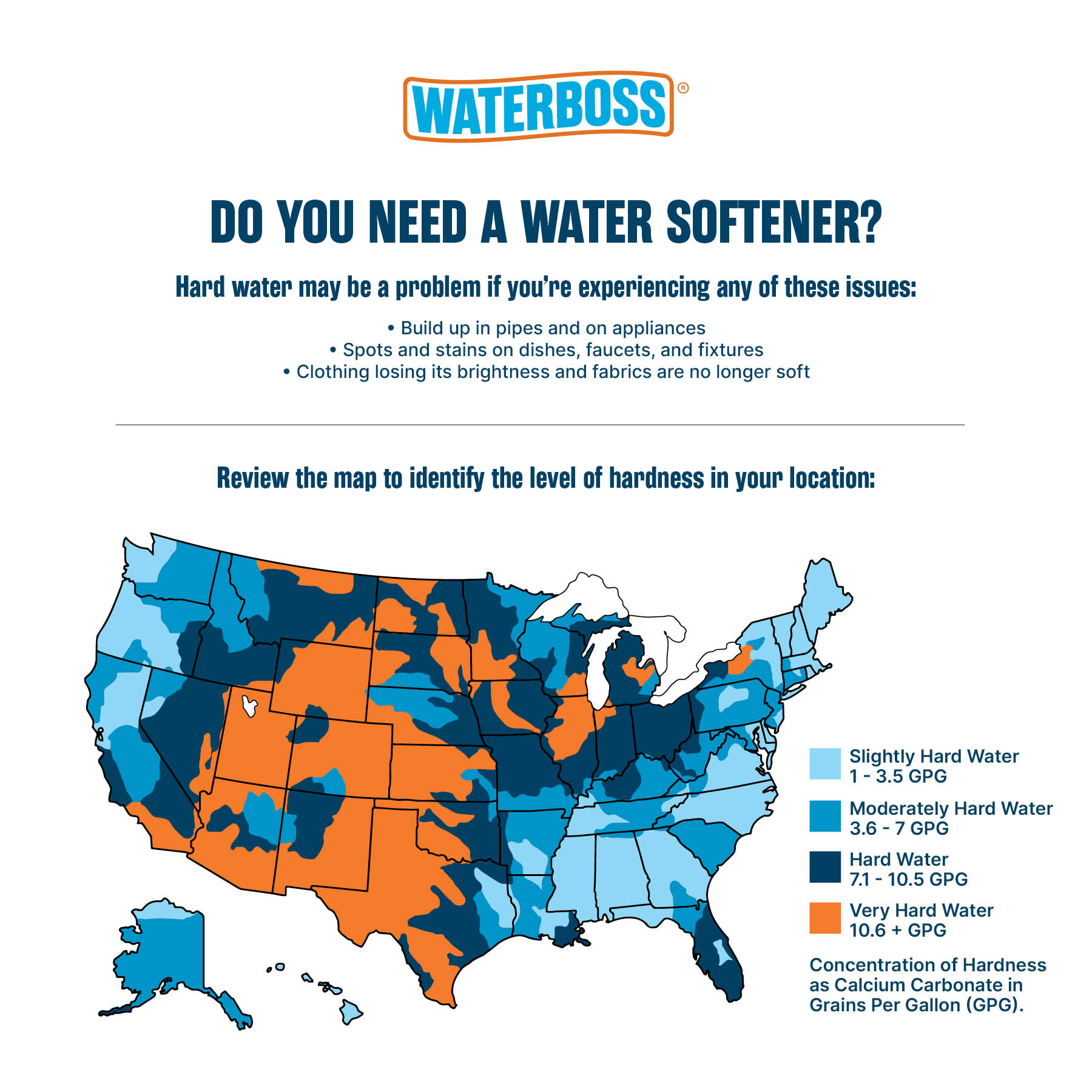How to Read a Water Softener Hardness Chart to Determine the Right Water Softener for Your Home
A number of problems can affect the taste, smell, and appearance of water, but just how common is hard water? Nearly 85% of U.S. households have hard water. That means, there’s a high possibility that you’re experiencing a few of these issues in your own home.

Depending on the hardness level of the water, hard water can affect your home in many ways:
- Excessive soap scum on bathtubs, shower tiles, and basins
- Residue after bathing, resulting in dry skin and dull hair
- Ineffectiveness of soaps and detergents, resulting in dingy laundry and reduced life of clothing
- Buildup of scale on fixtures, cooking utensils, and water using appliances
Clogged shower head and pipes
Water Softener Hardness Chart
A highly effective way to remove hard water from your water supply is to install a water softener. It’s important to test your water when deciding which water softener will best suit the needs of your home.
Water hardness is determined by total dissolved solids (TDS) in a volume of water, as measured in milligrams per liter (mg/L). The level of hardness in your water, as determined by water testing, will indicate which type of treatment will provide you with the most effective solution to your water problems. The water test you use should provide you with the TDS levels in your water. Using the chart below, you can determine which WaterBoss softener is best for your home:
| TDS in Parts Per Million (PPM) Range | Classification | Possible Water Softener Solution |
|---|---|---|
| 0 – 49 | Soft | Considered ideal in terms of hardness |
| 50 – 199 | Soft to Moderate | WaterBoss Model 700 or WaterBoss Model 900 |
| 150 – 350 | Moderate to Hard – Average Tap Water Range | WaterBoss Model 700 or WaterBoss Model 900 |
| 300 – 499 | Very Hard | WaterBoss plus Water Filtration |
| 500 | Not Safe – EPA Max Hardness/Contamination | WaterBoss plus Water Filtration |
What Causes Hard Water?

Water is an effective solvent that easily picks up impurities. As water moves through soil and rock during the hydrological cycle, it dissolves small amounts of minerals and retains them.
Dissolved calcium and magnesium are the primary minerals that are the cause of water hardness. As the levels of calcium and magnesium in water increase, so does the level of hardness.
Depending on the geography and topography in a given area, the level of hardness in the water can vary greatly from place to place.
Take Control of Your Hard Water with WaterBoss
Wherever you are located on the water softener hardness chart or map, WaterBoss has a water softener solution to meet your specific water treatment needs. The WaterBoss® whole house water softener features a built-in self-cleaning dirt and sediment filter for an even better quality water. See where you can buy your own WaterBoss.
Wherever you are located on the water softener hardness chart or map, WaterBoss has a water softener solution to meet your specific water treatment needs.





